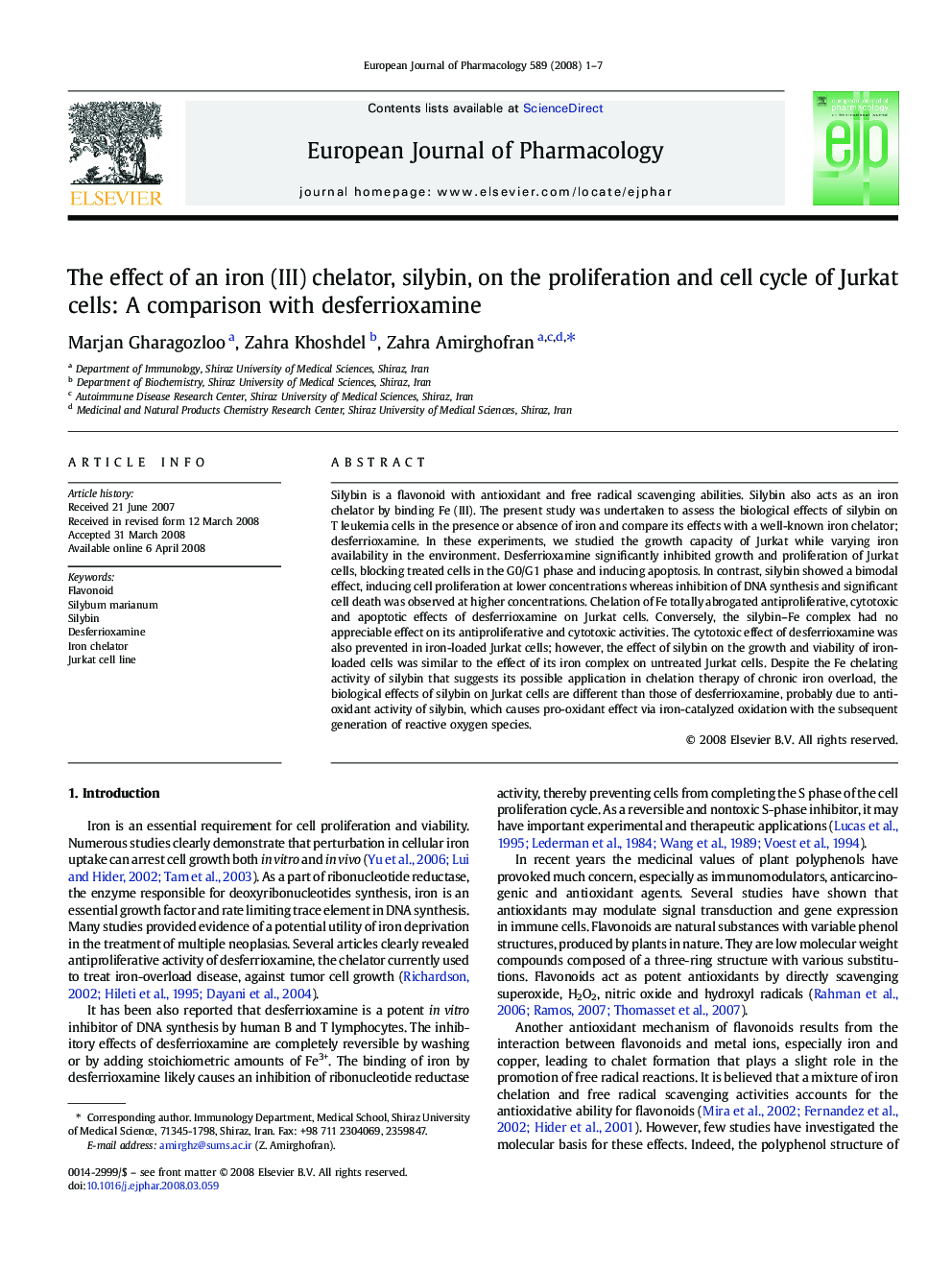| کد مقاله | کد نشریه | سال انتشار | مقاله انگلیسی | نسخه تمام متن |
|---|---|---|---|---|
| 2535081 | 1559107 | 2008 | 7 صفحه PDF | دانلود رایگان |

Silybin is a flavonoid with antioxidant and free radical scavenging abilities. Silybin also acts as an iron chelator by binding Fe (III). The present study was undertaken to assess the biological effects of silybin on T leukemia cells in the presence or absence of iron and compare its effects with a well-known iron chelator; desferrioxamine. In these experiments, we studied the growth capacity of Jurkat while varying iron availability in the environment. Desferrioxamine significantly inhibited growth and proliferation of Jurkat cells, blocking treated cells in the G0/G1 phase and inducing apoptosis. In contrast, silybin showed a bimodal effect, inducing cell proliferation at lower concentrations whereas inhibition of DNA synthesis and significant cell death was observed at higher concentrations. Chelation of Fe totally abrogated antiproliferative, cytotoxic and apoptotic effects of desferrioxamine on Jurkat cells. Conversely, the silybin–Fe complex had no appreciable effect on its antiproliferative and cytotoxic activities. The cytotoxic effect of desferrioxamine was also prevented in iron-loaded Jurkat cells; however, the effect of silybin on the growth and viability of iron-loaded cells was similar to the effect of its iron complex on untreated Jurkat cells. Despite the Fe chelating activity of silybin that suggests its possible application in chelation therapy of chronic iron overload, the biological effects of silybin on Jurkat cells are different than those of desferrioxamine, probably due to antioxidant activity of silybin, which causes pro-oxidant effect via iron-catalyzed oxidation with the subsequent generation of reactive oxygen species.
Journal: European Journal of Pharmacology - Volume 589, Issues 1–3, 28 July 2008, Pages 1–7